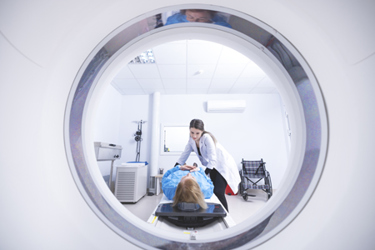Reducing The Cost Of Cancer With Improved Diagnostics
By Arnon Chait, Ph.D., MBA, President and CEO, Cleveland Diagnostics

The financial burden of cancer is massive. Convoluted and imprecise cancer diagnostic workup and expensive treatment due to late-stage diagnosis combine to make the cost of cancer unsustainable. More effective cancer screening and detection protocols are imperative to help preserve vital healthcare resources and save lives.
Financial Burdens Of Complex Diagnostics And Late-Stage Cancer Diagnosis
According to the American Cancer Society, the financial burden of cancer care is rising; however, approximately 25-30% of U.S. healthcare spending is classified as “waste.” Notably, considerable waste is linked to inefficiencies throughout the diagnostic process used to determine if an individual has cancer.

Prostate cancer serves as an example of this problem. According to the American Cancer Society, prostate cancer is the second most common cancer among American men. To begin the process of screening for prostate cancer, many physicians use the prostate-specific antigen (PSA) test, which measures the levels of PSA in the blood. Elevated PSA can be a sign of prostate cancer. However, PSA levels can be elevated for reasons other than cancer, such as benign prostatic hyperplasia, recent sexual activity, and health conditions that are common in the demographic most likely to be screened for prostate cancer (i.e., men over 50 years old). An elevated PSA alone can tell a physician something may be wrong, but not whether cancer is to blame.
To determine if cancer is the cause of a patient’s elevated PSA levels, a physician will usually resort to additional tests, such as an MRI to image the prostate or follow-up blood tests. If cancer hasn’t been ruled out, physicians will order a prostate biopsy to establish a diagnosis. Ultimately, this process relies on testing methods that aren’t inherently specific to detecting cancer. The Nation Cancer Institute indicates that only approximately 25% of men who undergo a biopsy following an elevated PSA result are diagnosed with high-grade prostate cancer, typically initiating therapeutic intervention. When examining the cost of this process, an estimated $1.86 billion is spent each year on PSA testing in the United States, and prostate biopsies cost in total about $2.5 billion. Ultimately, the field needs diagnostic testing methods that can quickly and effectively detect cancer or equally useful, detect who does not have cancer, to conserve resources, drive down costs of testing and capital expenditures, and make the diagnostic process more manageable.
Exploring Standard And Emerging Cancer Diagnostic Methods
Research into cancer screening efforts suggests that one of the largest barriers to detecting cancer is the limited nature of available testing methods. Specifically, many cancer types lack a detection method that is accessible while providing insight that is sensitive and specific enough to facilitate action. In addition to the expensive, delayed diagnoses already discussed, ineffective cancer screening protocols can result in diagnosing cancers that are unlikely to spread or be symptomatic in a patient's lifespan (overdiagnosis) or are simply false positives. For example, mammograms, the primary screening tool for breast cancer, have limited accuracy in detecting malignancies. Roughly half of women undergoing annual mammograms receive a false-positive result at some point.
Mammograms are representative of one common modality of cancer detection – imaging. Imaging technologies may help primarily analyze morphological changes in tissue, but they cannot necessarily determine whether these changes are due to cancer. In addition to imaging, many diagnostic technologies are focused on molecular-based changes. Molecular diagnostic tests, including hereditary biomarker tests, detect changes to genetic material (RNA and DNA) or provide tumor-specific protein biomarker analysis. These tests are promising but vary in their level of invasiveness, cost, and need for specialized equipment or training, as well as a key to their utility: effectiveness for early-stage cancers.
Ultimately, these in-depth methods are valuable, but their nuance and the advanced technology they require make them a cost- and expertise-prohibitive tool. Improvements to cancer testing represent an opportunity to streamline cancer diagnosis and free up resources.
Shifting Away From DNA: A Window Of Opportunity
To improve the cancer diagnostic process, those innovating in the space are looking beyond DNA. Instead of relying on genetic biomarkers or tests that aren’t cancer-specific, some testing approaches have shifted their focus to areas like proteins.
Genetic mutations are the first step toward cancer. However, genetic mutations are ultimately just instructions for altered protein synthesis, but do not always result in expression of cancerous proteins. Cancer-associated alterations in protein structure, glycosylation, and protein-protein interactions drive the actual manifestation of cancer. Thus, diagnostic tools focused on cancer-specific aspects of proteins are a promising new frontier. For example, methods that assess proteins and, more specifically, the changes to protein structure caused by cancer can expand the diagnostic landscape, providing physicians with more manageable and easier-to-interpret results.
In the case of prostate cancer, tests are being developed to identify isoforms, or structural variants, of PSA that are created by cancer cells. Tests focusing on PSA isoforms can be a valuable accompaniment to the PSA test, providing cancer-specific information. Such tests could be even more useful if they are simple to execute with conventional lab instrumentation and at reasonably low cost to the healthcare system. Ultimately, tests like these can help physicians refine the diagnostic decision-making process, providing insight into which patients are at the highest risk of prostate cancer and thus should undergo biopsy. This can potentially reduce unnecessary biopsies and conserve valuable resources. Extrapolating this progress beyond prostate cancer could be a game changer, not just by lowering healthcare waste but also by improving the diagnostic process for patients.
Conclusion
Spending waste and the underlying factors contributing to it, such as inefficient and convoluted diagnostics, is a constant problem in healthcare systems. Improvements in cancer testing methodologies could make cancer diagnosis more straightforward, saving resources, helping lighten the burden on healthcare systems, and making decision-making more straightforward for physicians.
About The Author:
Dr. Arnon Chait is the President & Chief Executive Officer of Cleveland Diagnostics. An entrepreneur, scientist, and educator, Dr. Chait’s extensive multidisciplinary background spans physics, engineering, and bioscience. As CEO, he applies his extensive experience commercializing innovative science to drive Cleveland Diagnostics’ vision of bringing early cancer detection into everyday practice with advanced testing that is both simple and affordable.
